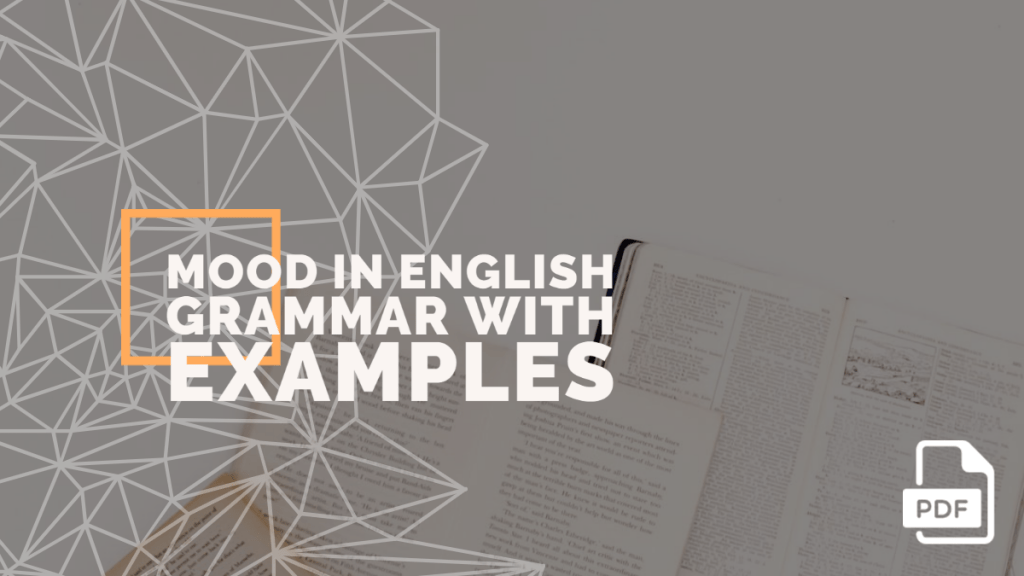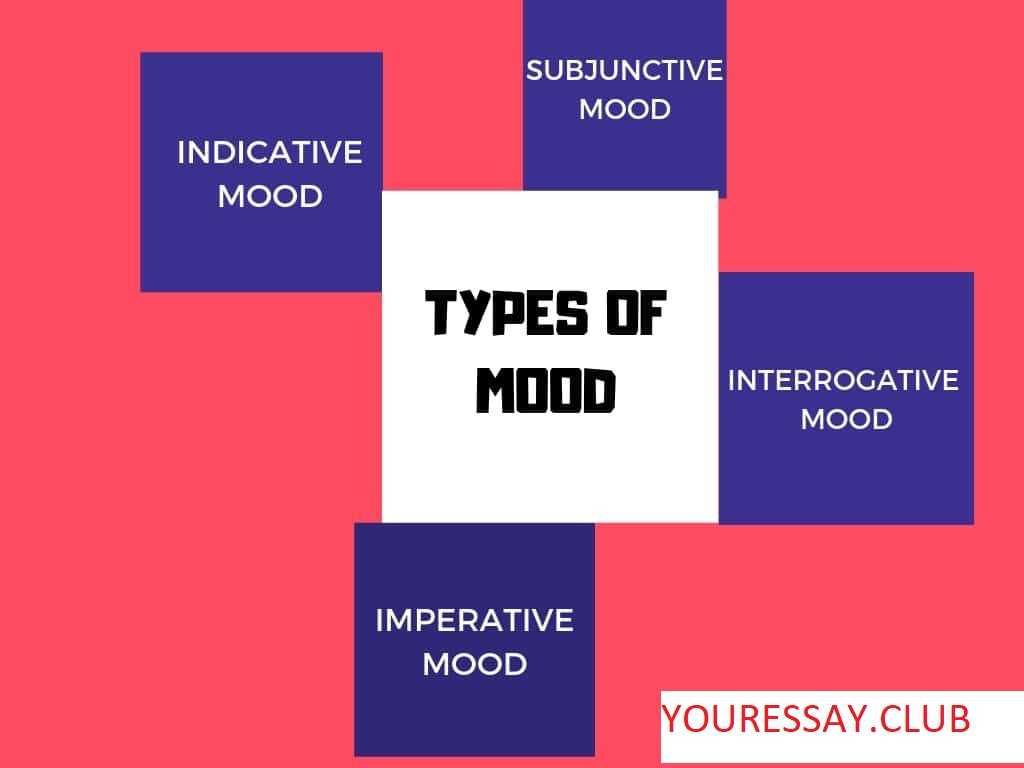Mood in English Grammar with Examples [PDF]
Today in this grammar lesson, we are going to learn what is mood with some suitable example. To download the PDF of this lesson please find the PDF downloadable link mentioned below of this article.

The mood is also known as modality or mode in grammar; it is used to refer to quality or form of a helping word in a paragraph that conveys the writer’s attitude towards the subject.
In that, it specifically denotes the tone of a verb making an author’s intention to be precise. The wording used can express a question, fact, command, wish or condition. Something to note is that paragraphs that contain commands or requests will have different modality than a sentence expressing wishes.
Hence we have different types of moods, which I will discuss indicating relevant examples for each kind of mood.
Types of Moods:
So, how many types of moods in English Grammar? In English Grammar, there are mainly Four types of Moods and those are:
- Indicative Mood.
- Imperative Mood.
- Subjunctive Mood.
- Interrogative Mood.

Indicative Mood
Mostly, ordinary statements contain this mode that is used to state an expression, fact, an opinion or asks questions. Often, an author’s perspective is to sound as factual as possible. Notably, most sentences express this type of modality. Here are some examples.
- Rachel read that novel in one day.
- Jake laughs whenever he sees her.
- Their new pet walks quickly.
Imperative Mood
It often denotes a command or a request. You will realize that a direct command was made mainly telling someone what to do. Sometimes it will be clear who the subject is or at some instances the author will use “you” which is also understandable. Often, in these sentences, the verb will showcase a direct call to action. Here are some examples.
- Make sure that you buy some toothpaste today.
- When you arrive home early, walk Jane’s dog.
Subjunctive Mood
Here the verbs used to express various conditions like wishes, doubt, hypothetical situations or lacks facts. Something to note is that the structure of the sentences shows an action; however, you will notice some form of dependency which is where doubting or questioning will be brought out clearly.
One way to note this mode is through the use of “if.” From that, it becomes clear that the writer or speaker was expressing a wish, request, doubt, hypothetical situation or even proposing. I will provide some examples of this type of mood.
- Mary wishes that her son was fast at getting ready for school.
- If I were in your position, I would skip town.
Interrogative Mood
It is used to ask a question and the tone used expresses some sense of uncertainty. It is easy to identify this modality as it forms an interrogative sentence which also asks questions.
The author seems to be inquisitive of something. Notably, these sentences have two verbs an auxiliary and the main one to make sense. An auxiliary verb [External Link] provides clarification to the main verb of a sentence. Here are some examples of an interrogative mood.
- Where does she work?
- When is your sister leaving?
- Where have your neighbors gone?
Conditional Mood
This type almost seems like an interrogative mode as its layout also contains an auxiliary helping word that is used to complement the main verb. However, in these sentences, there is no use of question marks.
Instead, you will notice the usage of auxiliary verbs like should or would. They are used to support the main verb. Some of the examples include should have. Also, the line may contain “if this, then that,” indicating that one act depends upon another. Here are some examples of conditional mode.
- If I lived in Paris, then I would write a novel.
- We would travel to Japan if we had our passports ready.
- She should have said yes to that young man’s proposal and get married this year.
A Must Watch Video Lesson on Mood:
In conclusion, it is clear that any grammatical modality does not represent an emotion or feeling; instead, it brings out a specific tone based on the intention of a writer. It is advisable always to consider which type of message you would like to send to your readers in what you write. You might be conveying an emotion, question, wish and command among others. Most readers like reading in between lines used.
This is the complete explanation on moods in English grammar, I hope you liked this lesson, if so feel free to share this stuff with your friend circle.